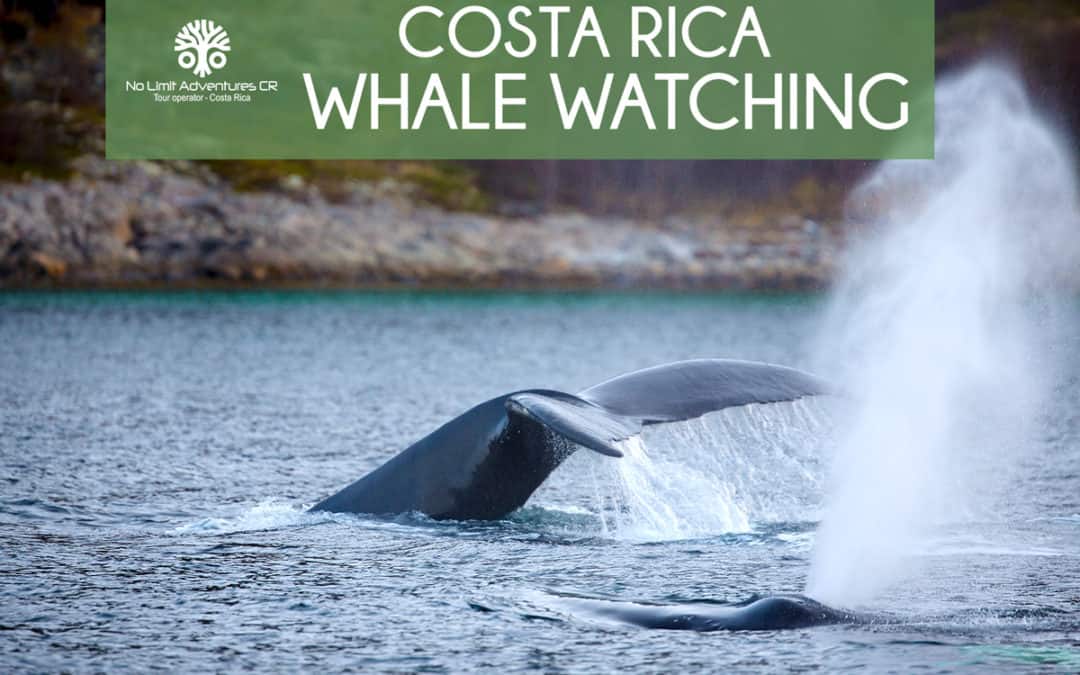If collecting lifetime memorable experiences is your goal when traveling, our blog post today is for you. Costa Rica whale watching should be in your bucket list, so stay tuned and learn all you need to know.

Image courtesy of Go Visit Costa Rica
The whales
Different species of whales visit the coasts of our country. False killer whales, pilots and whale sharks are some of them, but what we can most commonly see are humpback whales.
These giant creatures are one of the most fascinating ones in the whole animal kingdom. With 52 feet in length and its weight of 30 to 50 tons, it is characterized by its hump in the dorsal fin. The humpback whale can emit melodic songs that can be heard 100 miles away. They are cetaceans with amazing behaviors that include the ability of learning, collaborating, teaching, caring and having stages of mourning.

Image courtesy of ballenaswiki
Small crustaceans, fish, shrimp, krill, plankton and microscopic organisms are his favorite dish.
The sexual maturity of the whale is between 7 and 10 years, in its reproductive stage, when they have offspring, they remain very close to the mother, giving birth every 3 years. A whale mother is super protective of her offspring, taking hostile behavior against those who are a threat to her family.
How to experience Costa Rica whale watching
Costa Rica is one of the few places in the world where whales can be seen throughout the year. Whales travel more than 10,000 miles to reach the warm coasts of Costa Rica. We visit both the Antarctic and the Arctic whales.
The warm waters of our Pacific coast are the perfect environment to mate and have their young. Also, the food that provides these coasts are abundant and those preferred by whales or other marine species that migrate to these coasts.
The humpback whale watching season in Costa Rica is from July to November and from December to April. The migration from the south is the one that gathers a greater number of specimens, so the probability of seeing a humpback whale increases during the months of September and October.
The best places to whale watching in Costa Rica are Ballena Bay in the South Pacific Coast and Papagayo Bay in the North Pacific.

Image courtesy of ridecr
Are humpback whales in danger?
Naturally the whale does not have a predator, however there is a concern about the low account that currently exists of them. The human being and its effect on nature is their main threat. From hunting to radars of the military that patrol the ocean have affected their survival.
Pollution is another of the big problems that are affecting these wonderful cetaceans. The images of whales found dead on some coasts of the world by the amount of plastic they have ingested are heartbreaking.

Image courtesy of ballenaswiki
The increase in water temperatures due to climate change is reducing the sources of whale nutrition. Numerous studies have detected changes in their behaviors in addition to being malnourished and with parasites.
The sole existence of this majestic species is vital for the planet, since its feces are the main source of food of the marine flora that absorbs the greatest amount of CO2, keeping the ocean alive.
Tell us what you would like to experience in our country. Our personalized and private tours allow you to explore Costa Rica in your own way.

